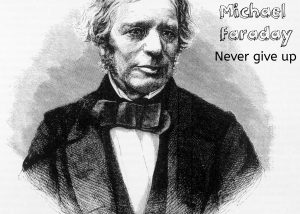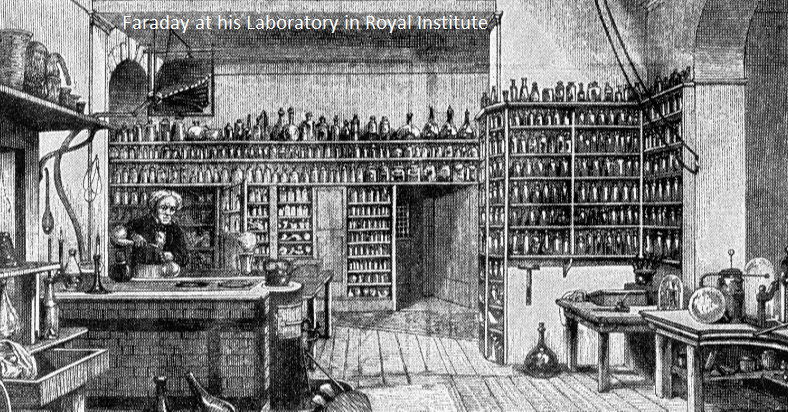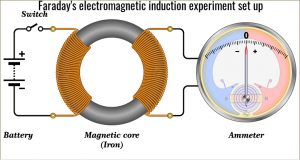Why Faraday’s research is revolutionary to start the era of Electrical Engineering?
Michael Faraday, an Englishman, was one of the greatest scientists of the 19th century and known as physicist and chemist. He began his scientific persuade with Chemistry in association with Sir Humphry Davy but his most important contribution in later years had been towards his discoveries of the relationship between an electric and magnetic field and understanding of electromagnetism. He was a man devoted to discovery through experimentation, and he was famous for never giving up on ideas that came from his scientific intuition.
Faraday’s as a chemist, physicist and a philosopher
Faraday was one of the greatest scientists of the 19th century. He
- began his career as a chemist;
- wrote a manual of practical chemistry that reveals his mastery of the technical aspects of his art. His first interaction with the scientific world was listening to Sir Humphry Davy at the Royal Institution and made his first notes of his understanding and shared with Davy;
- discovered benzene in 1825;
- was the first to liquefy a permanent gas (hydrogen, oxygen, nitrogen, and carbon monoxide; – also called incondensable gases or incoercible gases);
- studied electricity and magnetism and his major contribution was in establishing the relationship between the two;
- was the first to produce an electric current from a magnetic field, invented the first electric motor (discovered electromagnetic rotation – the principle behind electric motor in 1821) and dynamo;
- discovered electromagnetic induction in 1826, the principle behind the electric transformer and generator.
- demonstrated the relation between electricity and chemical bonding;
- discovered the effect of magnetism on the light in 1845, called the Faraday effect, and was the first experimental evidence that light and electromagnetism are related;
- discovered and named diamagnetism, the peculiar behavior of certain substances in strong magnetic fields; and
- He provided the experimental, and a good deal of the theoretical, foundation upon which James Clerk Maxwell erected the classical electromagnetic field.
Beginning of the discovery of electromagnetic induction
The (accidental) discovery of Hans Christian Ørsted in 1820 that the flow of an electric current through a wire produced a magnetic field around the wire and of André-Marie Ampère that the magnetic force apparently was a circular one like a cylinder of magnetism around the wire. These two discovered provided a platform for Faraday to begin his research work to understand the relation between the two.
The discovery of Ørsted stirred an intense effort of scientific work that producing electric current by magnetic field should also be possible. Faraday was the first to understand that when the circular force exists around a wire carrying current, it means that a magnetic pole could be isolated, which will move constantly in a circle around a current-carrying wire. Faraday’s ingenuity, ardent perseverance and laboratory skill enabled him to construct an apparatus that transformed electrical energy into mechanical energy, the first electric motor.
This discovery led Faraday to contemplate the nature of electricity that it is a vibration or force that somehow transmits as a result of tensions developed in the conductor.
One of his first experiments after his discovery of electromagnetic rotation was to pass a ray of polarized light through a solution in which electrochemical decomposition was taking place in order to detect the intermolecular strains that he thought must be produced by the passage of an electric current.
On August 29, 1831, Faraday wound a thick iron ring on both sides with insulated wire, with one end connected to the battery and another with the galvanometer. He expected that a wave will develop and move through the ring. What he observed that the galvanometer reading jumped when the switch is made ‘ON’ and in another direction when made ‘OFF’. This observation led his further experiments and concluding the principle behind it.
Faraday was still thinking of how an induced current was produced and repeated his experiment this time using a permanent magnet. He discovered that when a permanent magnet was moved in and out of a coil of wire, a current was induced in the coil. Magnets known to have a magnetic field surrounded it and he soon discovered that it is cutting off the magnetic field with the turns of the coil that produced electric current, and he thus, determined the law of producing electric currents by magnets that-
‘magnitude of current was dependent upon the number of lines of force cut by the conductor in unit time.’
He continued his experiments to produce continuous current by rotating a copper disk between the poles of a powerful magnet and taking leads off the disk’s rim and center. The outside of the disk would cut more lines than inside, and thus a continuous current produced in the circuit linking the rim to the center. This was the first dynamo (DC generator) and truly called the ancestor of electric motors.
Faraday’s Law of Induction
Faraday studied the quantitive analysis of induction, the basic laws of electromagnetism predicting how a magnetic field will interact with an electric circuit to produce an electromotive force (EMF). The variables are the magnetic field intensity and the rate at which the flux change is experienced by the coil. Comparative parameters of an electric and magnetic circuit in a brief are that flux (unit Weber) is equivalent to current, flux density (unit B) is equivalent to current density (J), Resistance (ohm) is equivalent to Reluctance (S).
Every action is having equal and opposite reaction, therefore, the induced emf will produce its own magnetic field which to oppose the field which has created it. Based on his extensive experiments, Faraday proposed two laws which have laid the foundation of transfer of energy from one reference to another i.e. motor, generator, transformer, solenoid etc. These two laws are as under:
First Law:
The changing magnitude of magnetic flux linked with a circuit always produces an e.m.f. in it; and
Second Law:
The magnitude of the induced e.m.f. is equal to the rate of change of flux-linkages and mathematically written as
The negative sign is based on the work of Heinrich Lenz which states that “an induced electromotive force (emf) always gives rise to a current whose magnetic field opposes the change in original magnetic flux’ This is also to understand that electromagnetic circuits obey Newton’s third law of motion and the conservation of energy.
During the same period, Joseph Henry worked on Electromagnets and during his trip to England, he met his contemporary Michael Faraday. Faraday’s work is based on moving a copper wire relative to a stationary magnet whereas Henry’s work is based on using electricity to create a powerful electromagnet, which induces a current in a second electromagnet, and electricity is then created on the other side (this is the basis of a transformer). The SI unit of inductance is named in his honour called Henry (L).
What followed with the discovery of Faraday’s Law of Induction
Faraday’s Law opened up an opportunity worldwide wherein many inventors worked in parallel on this task to carry on the research work to produce motor. New areas of technology discovered almost daily. Inventions in the field of electrical science and its applications were all around. Since the communication was not so fast as today, the inventors knew nothing of what is going around and it is only the conferences, where the products were displayed.
The first success of producing a real rotating electric motor was in May 1834 by German-speaking Prussian Moritz Jacobi. This followed large developments, advancements and new innovations to have a motor what we know today.
With the publication of an article, in 1833, by the German Heinrich Friedrich Emil Lenz about the law of reciprocity of the magnetoelectric and electromagnetic phenomena, i.e. the reversibility of electric generator and motor made the beginning of a race of producing motor and generator.
Hippolyte Pixii, a French i nstrument maker in the year 1832, constructed the first direct current dynamo, the first
nstrument maker in the year 1832, constructed the first direct current dynamo, the first 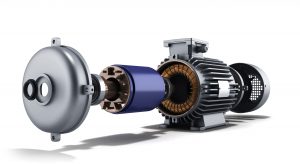 practical mechanical generator of electrical current using the laws of induction demonstrated by Faraday. He lived a very short life but has achieved that laid the beginning of commutator based motors and generators.
practical mechanical generator of electrical current using the laws of induction demonstrated by Faraday. He lived a very short life but has achieved that laid the beginning of commutator based motors and generators.
For more reading on this history of the motor during 1800-1854, visit this link. The parallel development of technologies of bearing, stampings, insulating material, the foundry has helped in having reliable and energy-efficient motor in today’s world meeting all types of requirement.
Invention of the Transformer
The invention of the transformer was the most important landmark invention which laid the foundation to adopt alternating current for generation, distribution and utilization of electric power due to advantage of raising the voltage level at generation end and lowering at user end as per requirement.
But, like many life-altering inventions, the credit for the electrical transformer does not belong to any one person. Using Faraday’s Law as their guiding discovery, successive inventions made inroads toward what became the first truly usable, commercial transformer.
Lucien Gaulard (France) and John Gibbs (England) developed a transformer and secondary generator in England 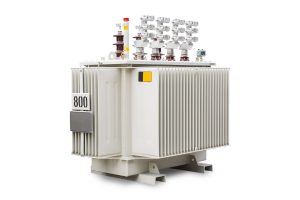 that brought AC (alternating current) power to household. In 1884, three physicists from Austria-Hungary–Otto Blathy, Miksa Déri, Karol Zipernowski, pioneered the transformer designs that are still used today. ZBD, as the trio nicknamed, also created the world’s first power station using AC generators. The corporate war between Thomas Edison and George Westinghouse about the use of electric power as DC or AC also begins and finally succeded in favour of AC.
that brought AC (alternating current) power to household. In 1884, three physicists from Austria-Hungary–Otto Blathy, Miksa Déri, Karol Zipernowski, pioneered the transformer designs that are still used today. ZBD, as the trio nicknamed, also created the world’s first power station using AC generators. The corporate war between Thomas Edison and George Westinghouse about the use of electric power as DC or AC also begins and finally succeded in favour of AC.
The transformer of earlier years developed based on the technological additions towards cooling, insulation material, moulding press, etc.
However, with the invention of solid-state devices and cheaper devices developed to convert DC into single or three-phase AC and DC power generation from Solar/wind source has again raised hopes of having a low voltage DC bus meet household power requirement.
In fact, to overcome the effect of inductance and capacitance for long-distance transmission at very high voltage called HVDC is preferred over AC transmission, therefore it is to say that AC and DC power had both its place in the world of Electric Power.
Units of measurement that followed with electromagnetic induction
With DC power, the units of measurements were limited to Voltage, Current, Resistance only. But with Alternating Current finding its place and the research work followed, following units developed:
Electrical Units
- The phenomenon of Inductance and Capacitance discovered which came into existence due to cyclic changes of voltage or current and called Henry (L) in honour of Joseph Henry, an American inventor and Farad (C) in honour of Micheal Faraday.
- Resistance perceived in AC circuit named as Impedance (Z)
- AC circuit is dependent on the cyclic change of voltage and current, and impedance is dependent on the frequency of change and called Hertz (Hz) in the honour of Heinrich Hertz.
Magnetic Circuit Units
- MMF (equivalent to EMF) is the magnetic field which drives the magnetic flux in the circuit and the derived unit is ampere-turn;
- MMF drives Magnetic flux similar to electric current and the SI unit is ‘Weber’ in honour of German physicist Wilhelm Eduard Weber (1804–1891). Further, magnetic flux density, Weber/sqm is called Tesla in the honour of Nicholas Tesla.
- Magnetic circuits also follow Ohm’s Law but called Hopkinson’s Law where resistance is repaced by Reluctance, emf by mmf and current by magnetic flux.
The similarity of AC electric with the principle of management
AC circuits with resistance, capacitance and inductance in its domain represent human behaviour and well explained in our post to explain and decoding the principle of management – click for link.
You may also like:
- Where to begin to understand Electrical Engineering?
- Mechanized measurement and inspection – a help to cut down…
- How Resistance is important in understanding Electricity?
- Why IR passenger traffic heading south?
- Indian Railway Context – Sanding to improve adhesion
- Average speed of freight train over Indian Railways
